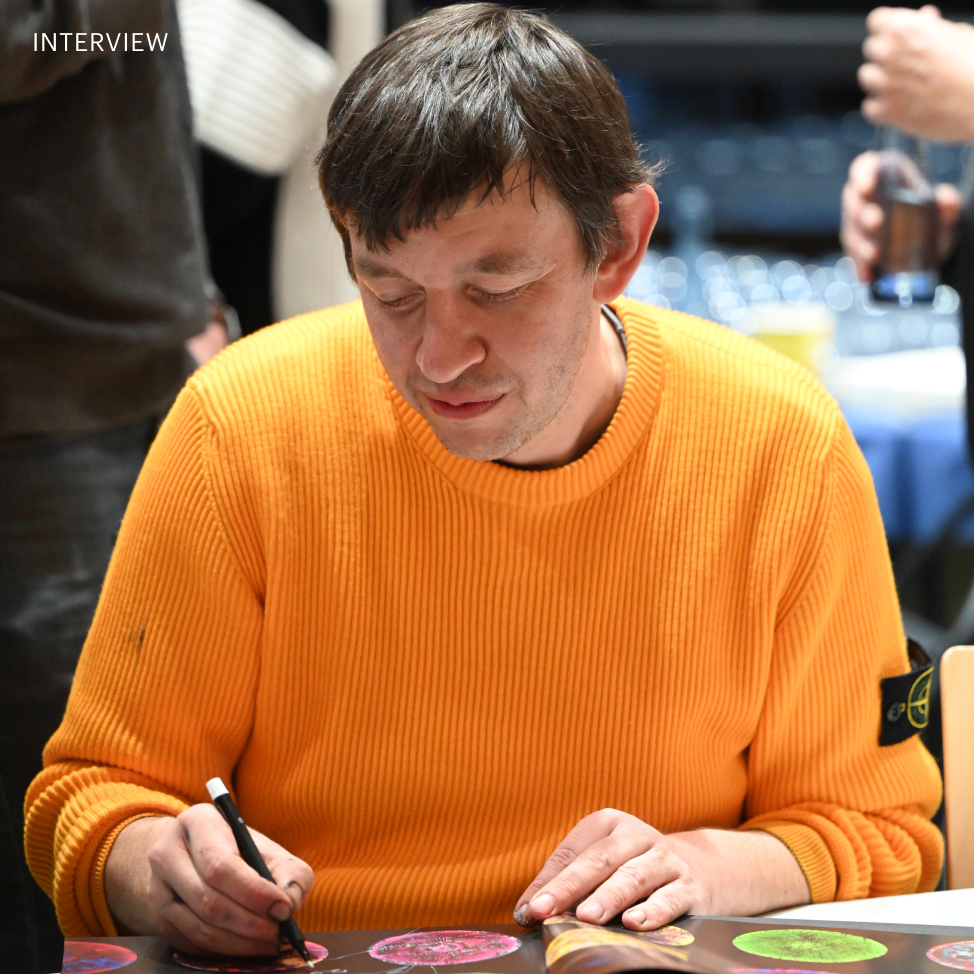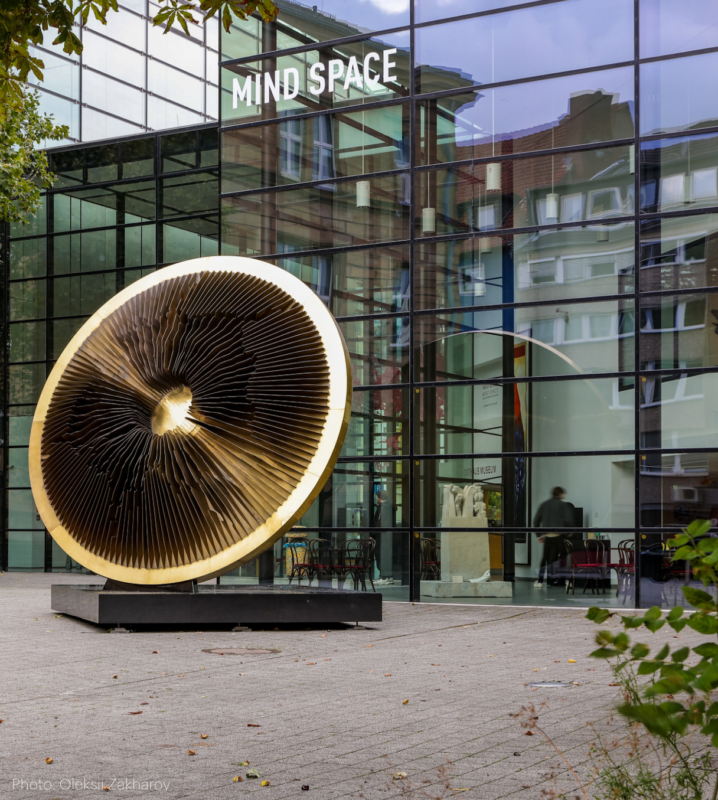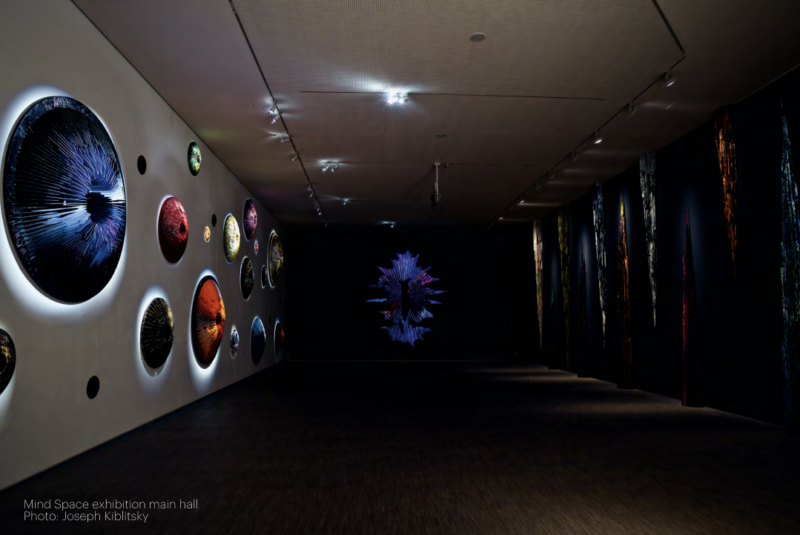Artist Vasily Klyukin creates large-scale abstract and figurative sculptures that evoke a wide array of associations, from brain activity patterns and futuristic space journeys to spiritual symbols. His most recent exhibition was at the Osthaus Museum Hagen in Germany, one of the most esteemed contemporary art institutions. Titled “Mind Space,” the exhibition featured over 250 works, inviting viewers on a meditative journey into both the universe and the human mind, limited only by one's imagination.
Fine Art Shippers received the book of the same name that was published for the exhibition and first presented in its final days. We took this opportunity to reflect on the past show. With Vasily Klyukin's permission, we also publish photos of the impressive project.
Mind Games in the Mind Space of Vasily Klyukin
The name, "Mind Space," refers to a world of constantly changing thoughts. It also hints at complex mind games, a journey in a maze of abstract ideas. And of course, it's hard to overlook its link to Hermann Hesse’s "Glass Bead Game."
Klyukin’s sculptures and visual art pieces that were displayed at the Osthaus Museum are notable not just for their size or geometric features, but primarily for their intricate details. Every aspect, whether it is height, diameter, structure, or material, is deliberate. For instance, the grand sculpture “413,” which has a diameter of 14.5 feet, is the result of precise calculations and the assembly of hundreds of components. Klyukin employs modern technologies, including laser cutting, in his creations. Each piece is meticulously crafted from exact digital designs and executed to perfection.
Vasily Klyukin gives special attention to color, emphasizing its tangible presence in his art. However, this color is not just for creating an illusion; it stands as an integral component.
Upon entering the exhibition, visitors were greeted by the “Chapel” in the museum’s primary gallery, featuring fourteen black, stalactite-like objects. This space resembled an abstract forest more than a spiritual place, with its jagged shapes pointing skyward.
Visitors would then encounter 144 “embryos”—small sculptures meticulously arranged on the walls in a tight, sequential pattern. The number 144—the square of 12— is symbolic. In both the Old and New Testaments, the number 12 appears frequently, from Jacob and his 12 sons to Jesus and his 12 disciples. The name “Embryos” alludes to ideas awaiting birth. Existing only in the realm of thought, they have yet to materialize in the real world.
Another section of the “Mind Space” showcased stalagmite-like structures juxtaposed against one another. The exhibition's highlight was a geometric sculpture that produced a vibrant audiovisual spectacle with a projector set on the ceiling.
The artist's reflections, his conceptual "mind space," were symbolically portrayed through oscillating colors, contrasting shades of black and white, elements reaching both upward and downward, and a captivating interplay of sound and light.
Other rooms featured sculptures made of metal and polycarbonate, looking like metal cacti, although not actually depicting them—examples of the artist’s countless ways of constructive work.
The last room contained various animal skulls and skeletons, creating a mystical ensemble. In the middle of the space stood a sculpture titled “DNA (Miescher),” the artist’s reflection on the importance of the DNA molecule for all living organisms.
At the end of the exhibition, the artist presented a performance "Homage to Joseph Beuys." Vasily Klyukin has always admired one of the most prominent German artists of the 20th century and a visionary whose unconventional methods changed the art world.
Vasily Klyukin on “Mind Space”
"I envisioned my exhibition not just as a showcase of sculptures, but also as a series of interconnected rooms, each with its own distinct essence. While I intentionally named the halls, I refrained from providing explanations to spur the viewer's curiosity and allow room for interpretation. Both the titles of the works and their abstract forms are designed to provoke imaginative thought.
I am a futurist. I'm captivated by the future, yearn to experience it, and often daydream about its possibilities. Hence, it's crucial to me that viewers immerse themselves in contemplation—thinking about what's yet to come, reflecting on the broader future of our planet, and considering pressing issues such as ecological concerns.
My creations are tangible evidence that no ambition is too big. The sheer scale (with some pieces at the exhibition soaring up to 24 feet tall), the intricate designs, and the blend of materials all emphasize the idea that even the boldest visions can be brought to life."
Following the project, two of Klyukin’s “Mind Space” sculptures became part of the Osthaus Museum’s collection. Later in 2023, they were featured at “Inner Life” (Innenleben), an exhibition of its highlights since its foundation.
Photo courtesy of Vasily Klyukin


